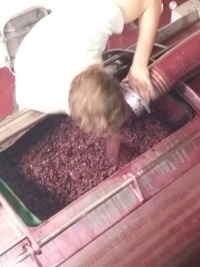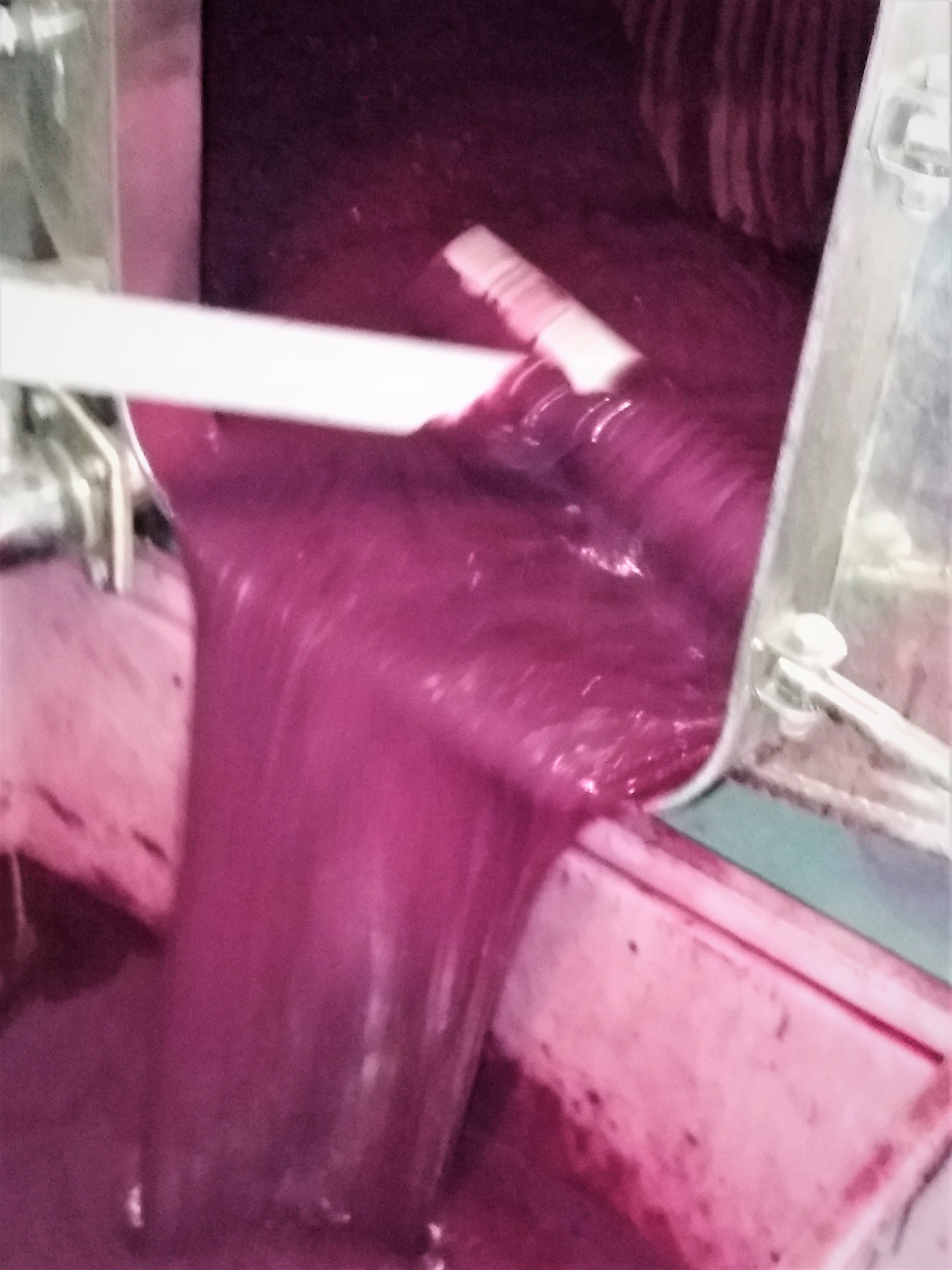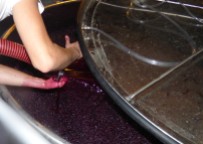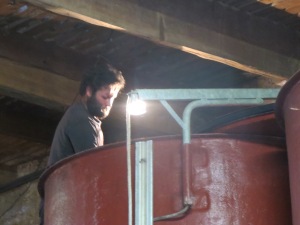Most of the focus of the posts on Vendanges 21 is on the picking and sorting of grapes, exploring the different varieties and how they are gathered and sent to tank. However, these are the early stages of vendanges and there is much work to follow, not so glamorous but just as important. I have heard a number of vignerons say that their job is to ensure that quality grapes which arrive at the cellar are allowed to express that quality and not to mess up their potential. So, what happens?
The making of wine begins with decisions about how to transform the fruit. The most obvious influence on how to proceed is the colour of the grape. There are some white wines made from red grapes but those are rare. Quality and quantity of the grapes will also determine decisions but let us start with that primary difference.
White grapes will go into white or orange wines. For white wines the grapes will be pressed (usually) soon after picking and the juice is sent to tank for fermentation. For dry whites the winemaker might seek to have only the alcoholic fermentation, not the malolactic in order to keep the freshness of the malic acid. Again, that is a decision for the vigneron. There will still be pulp and pips in that fermentation tank and after fermentation the lees or dried yeast cells will fall to the bottom of the tank after completing their work.
The young wine will be run off that rather dramatic looking sludge to avoid the danger of it spoiling the wine. The vigneron will then decide how to age the white wine, the type of container to use, stainless steel, barrel, amphora, egg, glass. The choice will again be based on the quality of the wine and what the vigneron wants to achieve, a commercial large scale wine or a smaller, more specialised or select wine.
I described the process of orange wine in a recent post. The white grapes will stay on skins to extract tannin, flavour and colour. The length of time will depend upon the preference of the winemaker. Again, the juice will be run off the skins either naturally or by press.
For rosé wines red grapes (perhaps combined with white grapes) will be used. They might be allowed to spend time on skins to extract more colour or they will be pressed directly for a lighter colour. (I recall Emmanuel Pageot in Gabian making a wine called 48h where its name reflected the time on skins to extract a dark pink/light red colour.) Rosé wines are mostly designed for freshness and early drinking so they will usually be fermented and then go to a neutral container to settle and then be bottled.
Red grapes give vignerons more decisions to make. Will they be destemmed totally, partially or not at all? The latter will be whole bunch fermentation and the stems will add a green, sappy touch to the wine. Whole bunch wines might be fermented using carbonic maceration, as in Beaujolais where the grapes ferment in the skins with carbon dioxide added to the tank. Jeff prefers a semi carbonic maceration, some of the grapes will be broken and will ferment as usual whilst others ferment inside their skins. Wines using carbonic maceration tend to have a more upfront fruit profile. That style might be what the vigneron wants to create or it might be that lesser quality fruit would not respond well to traditional fermentation.
Most red grapes at Coutelou are destemmed. Indeed, the new (2020) égraineur takes stems not just from the bunch but from every grape to reduce the amount of stalk in tank during fermentation (some will get through no matter what). The grapes will spend days in a fermentation tank. The red grapes with skins, pulp, pips and yeasts form a bigger quantity of material so Jeff uses the large cement tanks for this. The juice will be carefully monitored to ensure fermentation is happening. For red wines, winemakers want both fermentations to happen, malic acid would make them too tart. Malic fermentation usually happens alongside the alcoholic one or quickly afterwards. This year’s malic fermentation at Coutelou was the first time that it was slightly delayed, happily only a short delay but a surprise nontheless.
The bulky pulp has to be then sent to press. Ideally it would travel naturally by gravity but in most cellars a pump is needed, and a heavy duty one at that. The pompe à marc is powerful and noisy but does its work. The press then sends the juice to a tank or other container but usually a tank at this early stage. More tasting and analysis will determine what the winemaker thinks should happen next. Quality, quantity, commercial needs will all play a part in shaping that decision.
Let us not underestimate the commercial aspect of winemaking. The livelihood of the winemaker, their dependants and staff depend on selling the wine. Some cuvées will be made for easy drinking in large quantities, the wine will still be good quality of its type. Le Vin Des Amis and Classe are perennial wines from Jeff Coutelou and are always very good (try the 2020 VdA for proof) but they also provide a financial security. As well as covering costs of equipment, personnel, utilities etc the money helps to subsidise the smaller production wines which often also cost more to produce, eg barrels and longer ageing.
So, though my articles have focussed on the first stages of the vendanges, please don’t think that is the end of the story.


































































































































